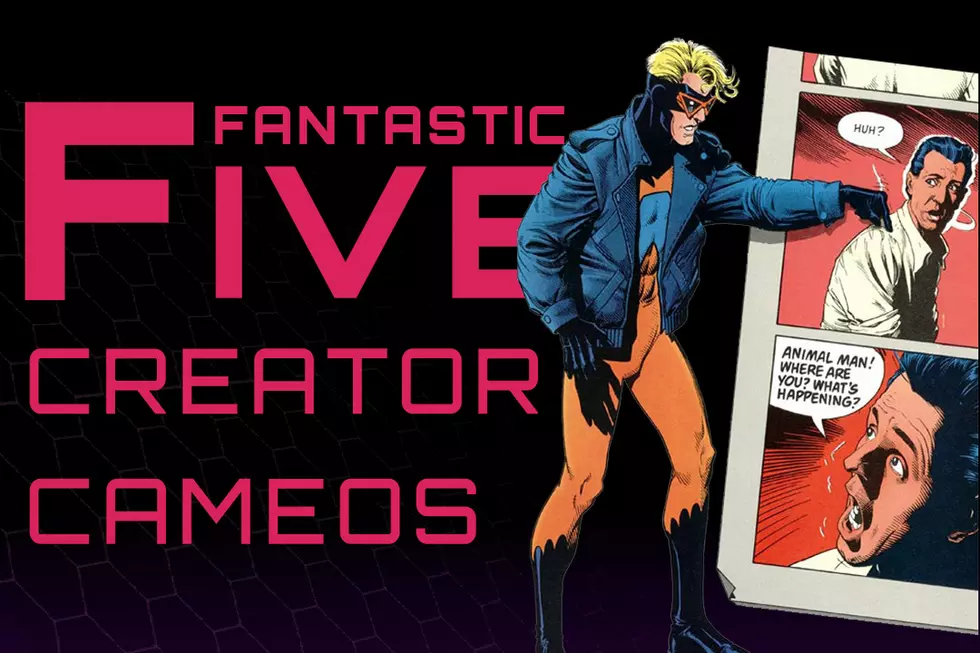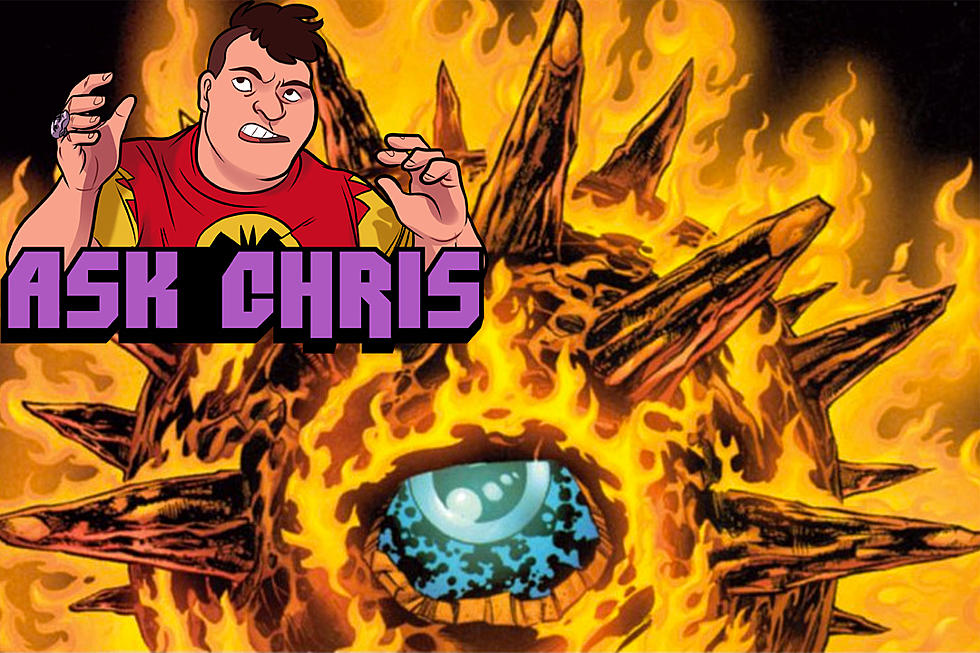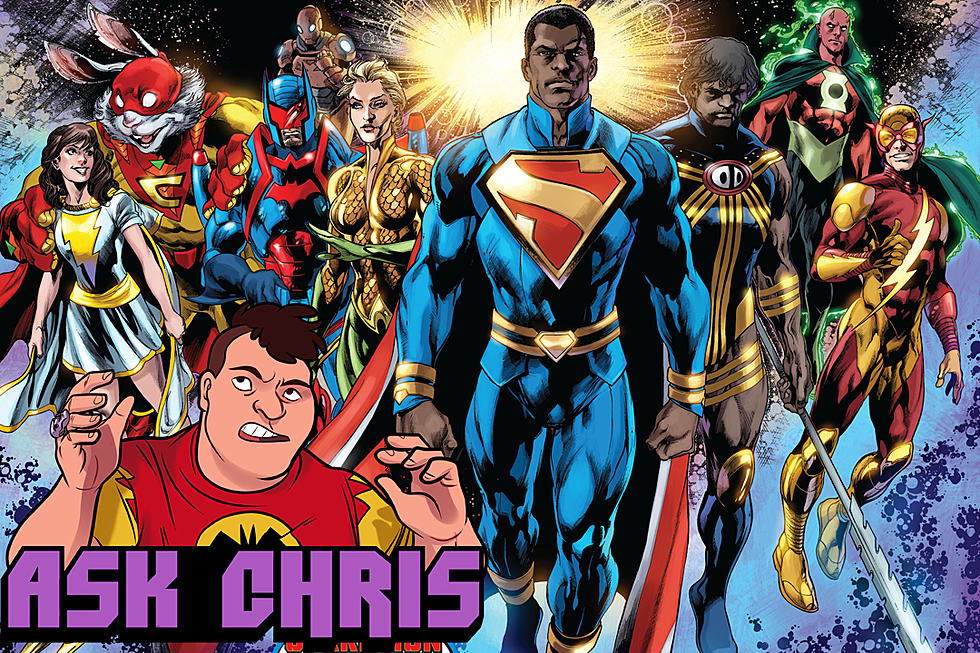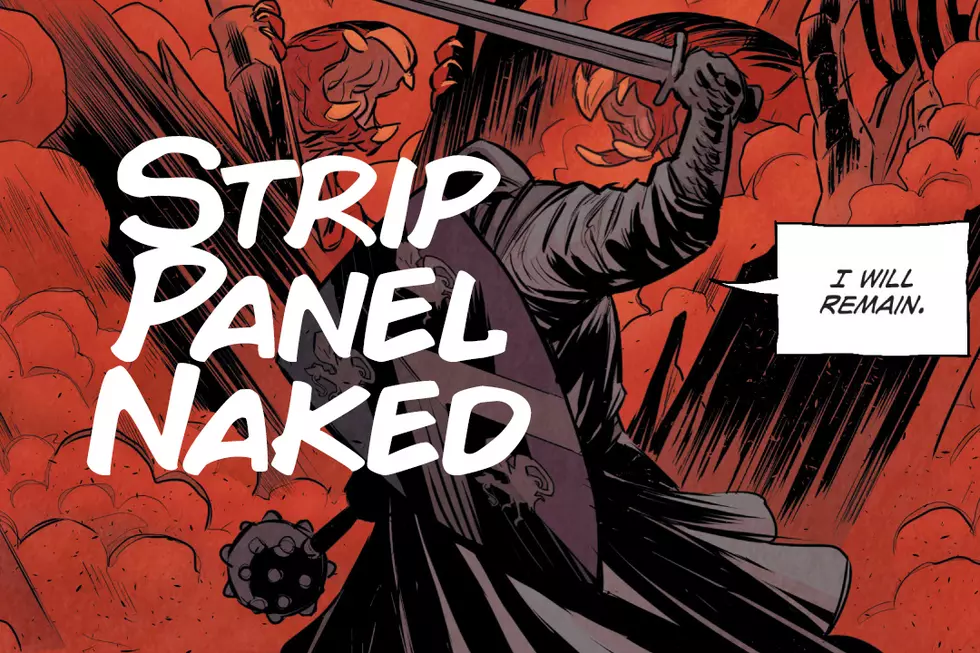
‘Multiversity’ Colorist Nathan Fairbairn Explains ‘Pax Americana’ Process
I'm sure more than one comic came out this week, but you wouldn't know that form my Twitter feed, where all anyone is talking about is Pax Americana, the latest chapter of Multiversity by Grant Morrison, Frank Quitely and Nathan Fairbairn. Using the old Charlton Comics characters that inspired Dave Gibbons and Alan "The Original Writer" Moore's classic graphic novel Watchmen, Pax Americana tells a story that is in turn inspired by Watchmen, creating a meticulously structured comic with layers so dense that it's blowing minds all across the comics scene.
And one of the most important parts about the comic is color. That's true of any comic printed in color, of course, but in this particular issue, color becomes a major theme, creating a backdrop for the story that's tied into ideas about spiral dynamics, something that's verbosely explained by the Question about three quarters of the way through the book.
If that sounds complicated, well, it is, and our own David Uzumeri is hard at work on annotations explaining it all. Until then, we're fortunate enough that Fairbairn has taken to his Tumblr to break down his coloring process and how he worked with Quitely to create the incredible visuals of Pax Americana.
Fairbairn starts out with Quitely's pencils, which are pretty impressive in their own right...
Fairbairn: After weeping in a corner for a few minutes, I picked myself up and got stuck in.
...and then goes through every step of the process, including pulling reference, looking at Quitely's previous work, and flatting the pages:
Fairbairn: Nothing terribly impressive here. Just a highly realist approach with everything in blocks of local color. I briefly considered casting the panels where Harley’s head initially gets blown apart in restricted expressionist palettes of shocking yellows, hot oranges and lurid reds but that immediately felt like the wrong approach. My read was that we wanted this whole three-page cold open to hit the reader hard. We wanted hyper-realism and hyper-detail. We wanted it to play out like a nature documentary of a cheetah ripping the throat out of a gazelle in super slow motion.
Fairbairn: Up to this point, all of these colors are sitting on a layer below the line art. The last step after that is coloring the line art itself (this is called a “color hold”) and painting glow effects and the like on top of everything. There’s not a ton of that sort of thing on this page, but if you look closely, you can spot it.
Fairbairn even compares the work he did here to his work coloring Bryan Lee O'Malley's Seconds, and it makes for a fascinating read. If you don't often think about just what coloring adds to the comics page -- and even if you do -- it's worth taking a few moments to go through Fairbairn's thoughts on his process, and realize he did that forty-one times to make the rest of the book.
More From ComicsAlliance
![When Everything Is Pink, Nothing Is Pink: Sarah Stern On Color And Creativity [Interview]](http://townsquare.media/site/622/files/2017/03/Cindersong-feat.jpg?w=980&q=75)








